Everything You Need To Know When Making Pot Pie
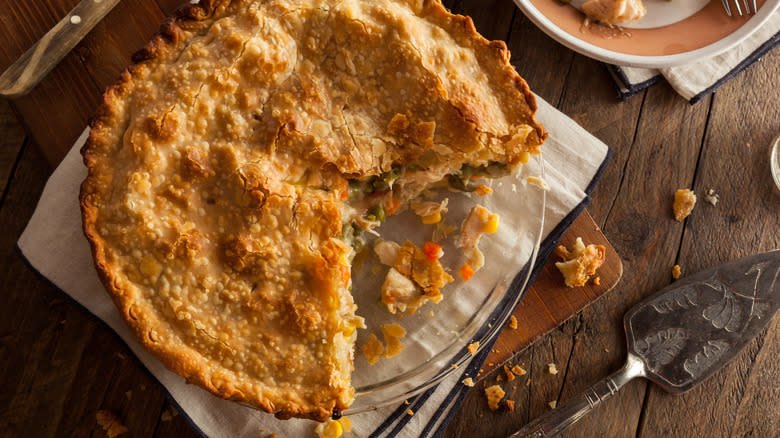
We may receive a commission on purchases made from links.
Various iterations of the pot pie have existed for centuries, with the most recognizable oldest versions being the historic meat pies that originated in pre-Renaissance northern Europe. This dish's longevity is hardly without merit. There's nothing quite like a really well-made pot pie, especially in the cooler months when you're craving comfort food. A good pot pie has it all: a flaky, tender, buttery crust; a succulent, herb-filled, and flavorful gravy; and hearty portions of well-seasoned vegetables and the protein of your choice. What more could you need?
However, actually finding or making that perfect pot pie can be difficult. Store-bought pot pies have their place, but nothing matches homemade. So, do you need to level up your pot pie recipe? We have all the tips and tricks you need, courtesy of four talented chefs (you can read up on their credentials in the methodology slide at the end of this article!). Here's everything you need to know when making a pot pie.
Read more: 41 Must Try Hot Sandwich Recipes
The Crust Is The Hardest Part
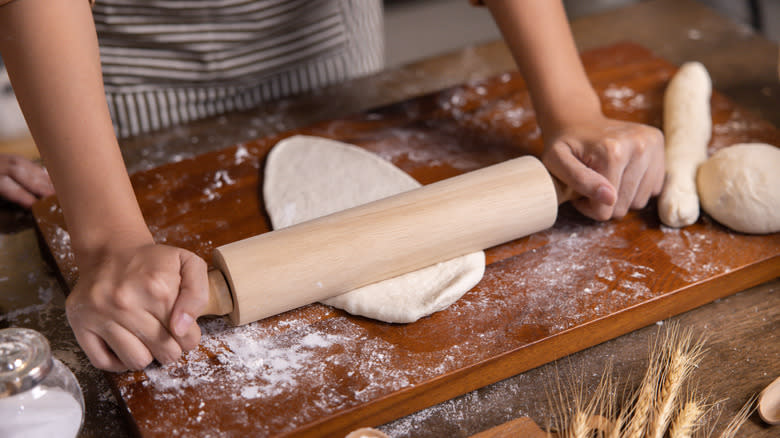
Anyone who's made, or attempted to make, their fair share of pot pies can likely agree that the crust is the hardest part to get right. Making pie crusts from scratch is difficult in general, but making a pie crust for a pot pie can be extra challenging when you consider that it must go under and atop a pretty wet, gravy-laden interior before baking, which poses an extra risk for a soggy crust. That said, as Chef Giancarlo Borletti of BSTRO38 noted, "The dough has to be homemade. Nothing replaces that crust on top."
So, how do you make sure your pie crust is top-notch and never soggy? To avoid a soggy bottom crust, there is the option of simply opting to not add a bottom crust, and only using a top crust. However, James Beard-recognized Chef Chad White of restaurant Zona Blanca in Spokane, Washington, says, if you do choose to include a bottom crust, par-bake it in the cooking vessel you plan to serve the pie from. Additionally, make sure you're fully cooking the pie crust, for the best results. James Beard Award-winning Chef Michael Smith of Extra Virgin and Farina in Kansas City, told us, "Undercooking the pie crust top will render it soggy and unappealing."
Texture Matters, For Both The Exterior And Interior
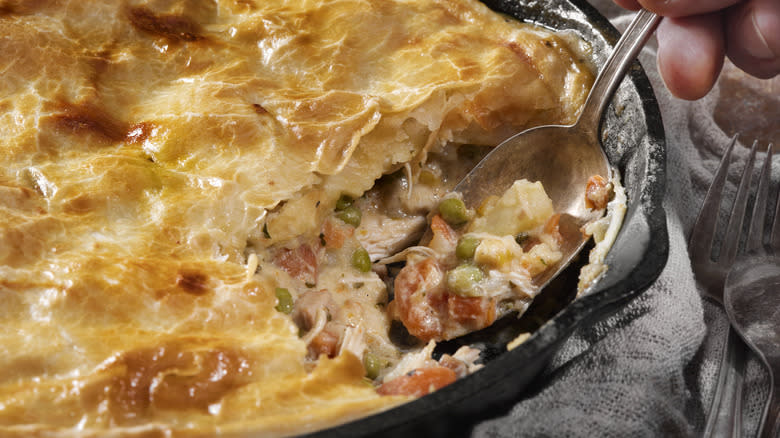
It's likely a given to keep crust texture in mind when making a pot pie, as a pie crust with a poor texture is very noticeable, and not in a good way. Meanwhile, a pot pie crust with an ideal texture (which Chef Michael Smith described as "light, flaky, and relatively easy to break through with a spoon") is a work of art. However, as you focus on getting your crust just right, don't forget to keep your pot pie's interior textures in mind, as well.
Chef Smith told us that a pot pie's gravy or sauce should not be too thick, but not thin either; think "the consistency of a well-made soup." Additionally, the filling should be appropriately packed with vegetables and protein, all portioned so that they can easily be scooped up. As Chef Smith said, "The amount of protein in the pot pie should be abundant ... That's the genre of food you are cooking within — comfort and heartiness. Typically, it's not a delicate flower."
You Might Not Need To Cook Your Filling Fully
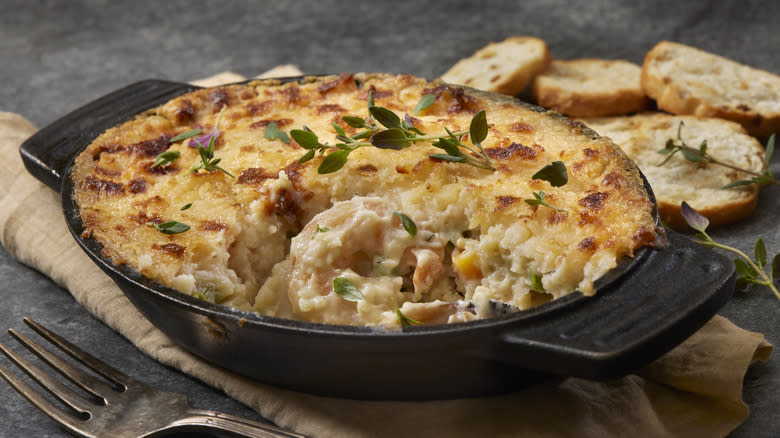
Yes, you need to cook your pie crust fully so that you get that light, flaky texture and no fogginess. If you're using a protein like chicken, cook it all the way through to avoid any nasty food-borne illnesses. However, Chef Michael Smith said that there are some instances where you might not need to cook all of your pot pie's fillings fully.
He said, "If I'm using seafood in the filling, I'll partially cook it. The protein will finish cooking all the way through as it bakes in the oven. Otherwise, it will be overcooked and rubbery." Never thought of making a seafood pot pie? Chef Smith recommended a few seafood pot pie filling combinations. His seafood options of choice for a pot pie include lobster, crab, or shrimp, paired with either a creamy marsala sauce and mushrooms and pearl onions, or a tomato-driven sauce combined with chorizo or pancetta, and fennel.
You're Not Limited To The Standard Chicken-And-Veggie Filling
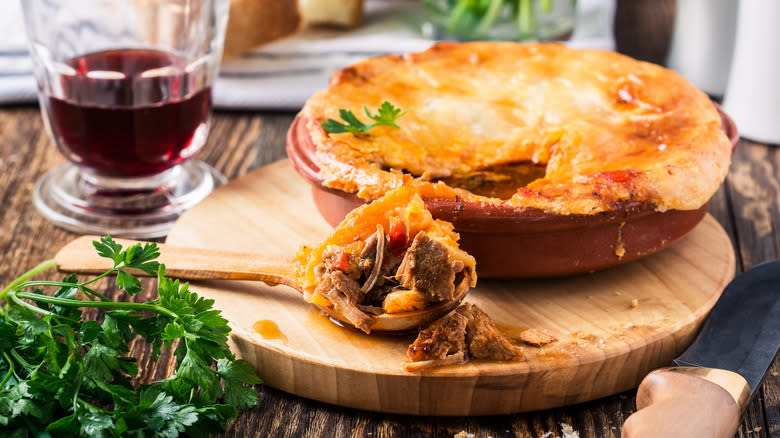
Along these lines, don't ever think that your pot pie culinary adventures, whether you're the diner or the cook, are limited to the standard chicken-and-veggie filling. Yes, we all love the classics, but you've got options if you're looking to expand your horizons. Chef Smith also recommended trying an all-veggie filling, with combos like tomato, zucchini, eggplant, and onion, or peas, fava beans, and cauliflower. If you want to craft a lamb-based pot pie, consider a pomegranate molasses-based sauce, with cumin, dried apricots, pearl onions, and carrots. A beef pot pie, meanwhile, goes well with classic flavors and ingredients like wild mushrooms, carrots, tomatoes, leeks, and parsnips.
In general, though, feel free to have fun with it, so long as you have a few ingredients that fit into the basic pot pie necessities. "Gather your favorite root vegetables, meats, and herbs," advised Chef Chad White. "Spend the day filling your home with delicious aromas, leading your way to a comfort food coma."
You're Not Limited To A Traditional Pie Crust
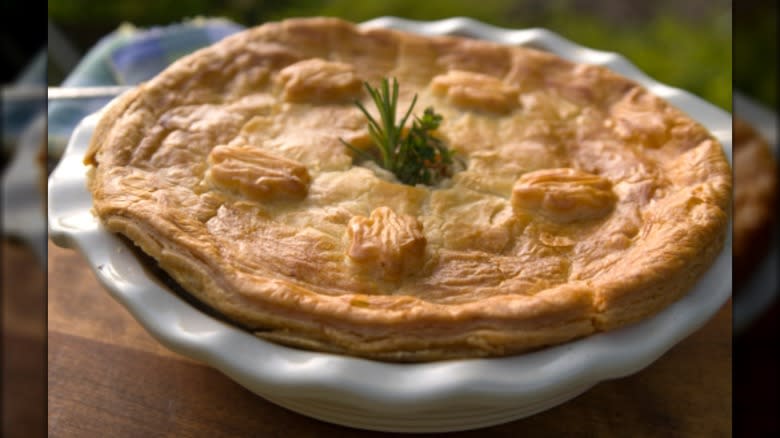
Just as you're not limited to the traditional chicken-and-veggie pot pie filling, also don't feel as if you're restricted to using a typical pie crust made with flour, water, and shortening. This is especially good news if you still can't get your pot pie crust just right, no matter what tips or tricks you try. Chef Michael Smith says you can swap out your pie crust for crushed potato chips or corn chips, hash browns, or even biscuits, which he said you can even pre-bake and then set atop the filling, acting as if they were there the whole time (your guests will never know!).
And if you really, really want something pie crust-adjacent and can't get the homemade version down pat, Chef Chad White has a cheat code for you: "Use store-bought puff pastry as just a topper instead of lining your baking dish with dough. Puff pastry can be found in the freezer section of most grocery stores. Just remember to let it thaw fully before use."
You Can Use Leftovers For Your Pot Pie Filling
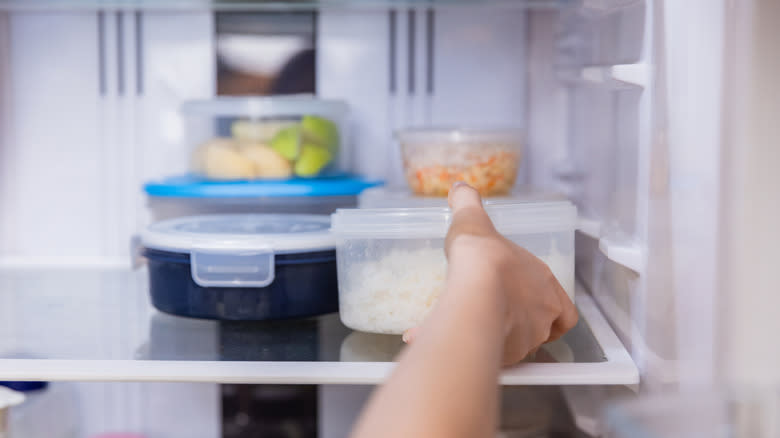
It's not just the pie crust that Chef White has a hack for, though. He's also a big believer in using leftovers for your pot pie filling. There's no need to roast a whole chicken just for those chicken bites and your gravy, and there's no need to peel a bunch of carrots and potatoes (unless you want to, of course). He said, "Anytime I make pot pie, it's usually on a cloudy day and almost always includes leftover meats and vegetables from holidays: beef, turkey, chicken, lamb, etc. A post-Easter pot pie for our household typically calls for leftover garlic and herb-crusted roasted leg of lamb with salt-roasted carrots, spring onions, turnips, golden beets, and sweet peas."
So, is it the few days after Thanksgiving? Use your leftover turkey for a turkey pot pie. Family always want ham for Christmas or Easter? Time to make a ham pot pie. Have a bunch of leftover containers filled with some sort of protein you cooked up for one meal, and veggies you cooked up for multiple others? You can make a pot pie.
A Rotisserie Chicken Makes Pot Pie Easier And Quicker, But No Less Delicious
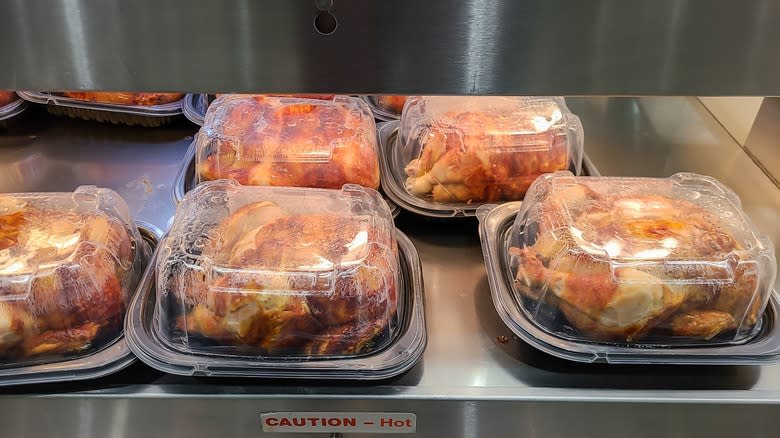
Let's say, though, that you have no leftovers in the fridge, or at least none that might be suitable for a pot pie. You don't want to cook any more than you have to, and you want the process to be as quick and painless as possible. A rotisserie chicken from the grocery store might be exactly what you need, according to Chef White, who says all you'll need to do is pull the meat from the bones and add the chicken to your filling. Chef Giancarlo Borletti likewise mentioned that he likes to use a whole rotisserie chicken in his pot pie.
Don't want to get your hands dirty? To easily debone your chicken, use the viral chicken rotisserie bag hack that simply requires you to toss the chicken, while it's still warm, into a large gallon bag and rub it all over, through the plastic, which should at least remove the majority of the chicken from the bone. Make sure you don't throw away the juices from your rotisserie chicken, either. You can use them in your sauce.
You Can Enhance Your Pot Pie Gravy With Tallow, Miso Or Bone Broth
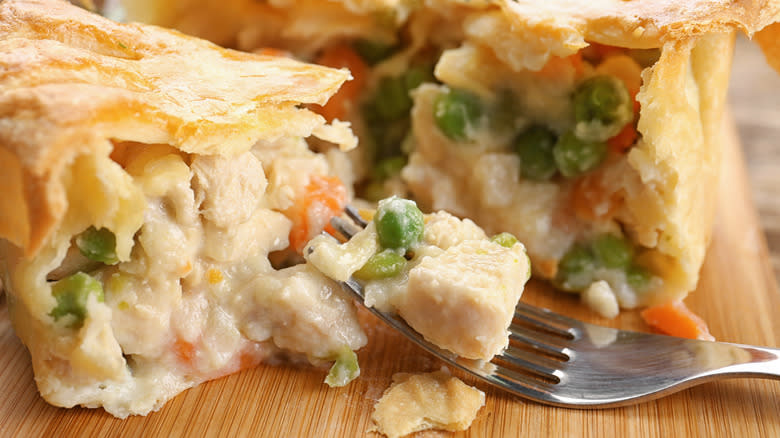
Beyond using the chicken's juices in your pot pie gravy or sauce, there are other things you can add to enhance the flavor. Chef Dennis Littley, a fine dining chef with more than 40 years of experience and owner of askchefdennis.com, advised, "Enhance the depth of flavor in the sauce by incorporating umami-rich ingredients like a spoonful of miso paste (definitely a personal fav!) or a splash of soy sauce. These additions add complexity and richness to your sauce, making it irresistible but not overpowering."
Chef Chad White recommended, that if you're making a traditional thick sauce with a roux base, consider using tallow instead of butter in the roux, or fat rendered from the meat that you're using in the pot pie (if you cooked meat freshly for the pie). Additionally, as you add liquid to your sauce to thin out the roux, rather than using less flavourful water or milk, you could use bone broth for even more flavor.
Fresh Herbs Make A Big Difference In A Pot Pie
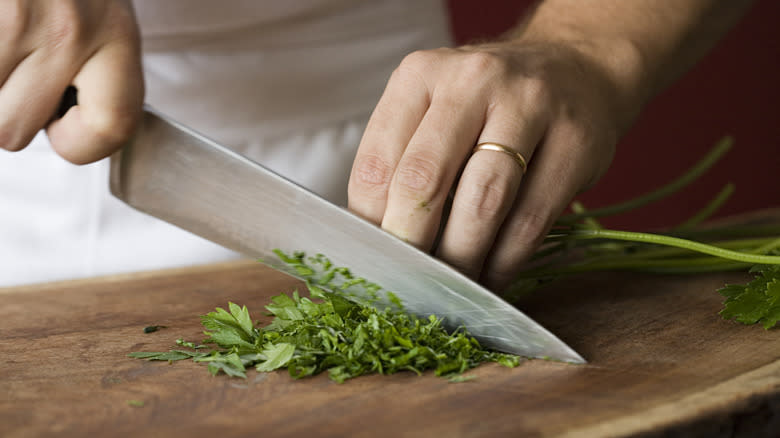
We all know that some herbs are just better fresh and, when it comes to using herbs in your pot pie, opt for fresh options versus the dried stuff sitting in your pantry. Chef Michael Smith mentioned that he likes to be sure that fresh, green herbs are front and center in the sauce, and visible beneath the crust. Likewise, Chef Chad White said he adds fresh herbs just before adding his sauce to the pie crust, noting, "They tend to provide a greater and fresher flavor. My favorite is the leaves attached to the celery stalks. It packs a large amount of celery flavor without the competing crunchy texture."
However, your pot pie sauce isn't the only place you should add a dash of your favorite herbs. Chef Dennis Littley recommends mixing fresh herbs with melted butter and then brushing your top crust with the mixture before you pop that baby in the oven. His favorites include thyme, rosemary, and sage.
Use Fresh Vegetables And Cook Them Ahead Of Time, For Better Flavor
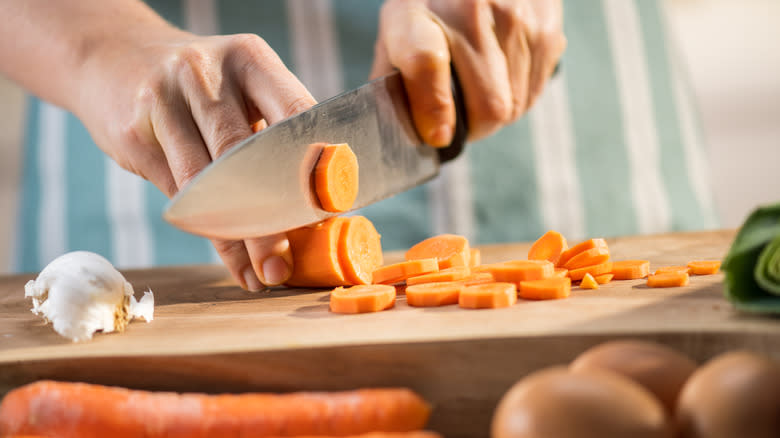
Beyond fresh herbs, add some fresh veggies into the mix. Yes, for a superior pot pie, skip the frozen vegetables and all those cans, break out the vegetable peeler, and then cook the veggies ahead of time before adding them to your pot pie. However, don't just boil or steam them. That's not a surefire way to add extra flavor. Instead, take Chef Littley's advice.
He told us, "For an extra layer of smoky goodness, cook your vegetables in rendered bacon fat before adding them to your filling mixture. Not only does this infuse your pot pie with lovely bacon flavor, but it also adds a depth of richness that, in my opinion, takes it to the next level." No rendered bacon fat on hand? This is the perfect excuse to cook up some bacon, which you can then chop and add to your pot pie filling. If you have leftover rendered bacon fat, after making your pot pie, there are plenty of ways to use bacon grease, too, from in your baking to your bloody mary.
Vodka Can Make Your Pie Crust Flakier And More Tender
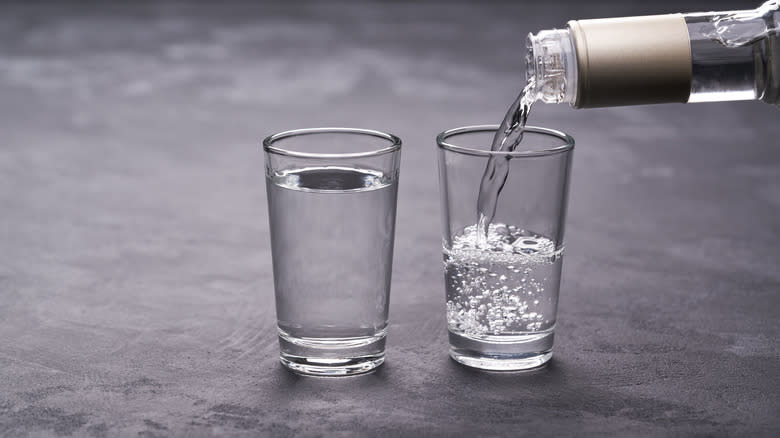
While you're making that bloody mary, keep out the vodka, because you might just need it for your pie crust. Chef Littley told us that his secret to a perfectly flaky pie crust is to replace some of the water you'd normally use in the crust with chilled vodka. He said, "The alcohol prevents gluten formation, resulting in a tender crust that's also incredibly flaky." Don't worry. All the alcohol will cook out, so you won't be left with a pie crust that tastes like a vodka soda.
In fact, you should be cooking with vodka more overall. Vodka can help in a range of pastry situations, beyond your pot pie crust, but it can also be used in place of cooking wines in many recipes, and it will make pasta sauces creamier, helping tomato sauces retain their texture, without adding extra flavor in the way a cooking wine might.
The Vessel You Cook Your Pot Pie In Matters

You've rolled out your pie crust. You've cooked all your ingredients. The sauce is simmering. Now, it's time to just assemble it all and let it bake until perfection. However, don't just grab a glass casserole dish or pie pan. The vessel you cook your pot pie in matters, too, and should be given a little extra consideration. Chef White's favorite cooking vessel for a pot pie? Individual, small cast iron pans, or miniature Le Creuset cocottes, due to their even heat distribution (though the adorable miniature appearance doesn't hurt, either). He cautions, though, not to forget to grease your vessel of choice, regardless of your crust preference, so you can avoid any stickage.
If you like the idea of using cast iron to cook your pot pie, check out these absolute best cast iron skillets for your kitchen. Cast iron is likely more affordable than you think, and the dreaded maintenance isn't nearly as bad as some make it out to be.
Steaming Your Pot Pie As It Bakes Keeps It Moist
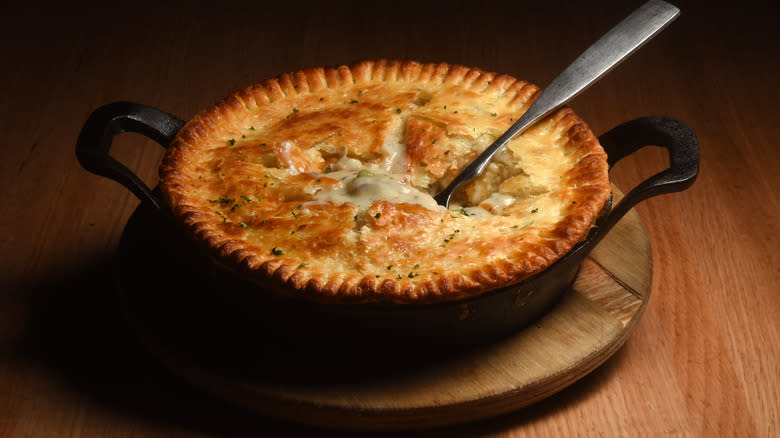
You know to cook your pot pie longer, in order to prevent a soggy crust, and ensure the crust cooks all the way through — but what if you're worried that your pot pie is going to ultimately dry out before it cooks all the way? There's a little trick to ensuring your pot pie stays moist and cooks thoroughly, courtesy of Chef Littley.
He told us to place a small (oven-safe!) bowl of water on your oven's lower rack, as you bring the oven up to heat. "The steam helps keep the crust moist while it bakes, resulting in a beautifully golden and flaky crust that's a great complement to your savory filling." He admits what we've already discussed: the pastry is one of the hardest parts of making a pot pie. However, with chef-approved tips and tricks like these, you have everything you need to know when making a pot pie, right at your fingertips.
Methodology
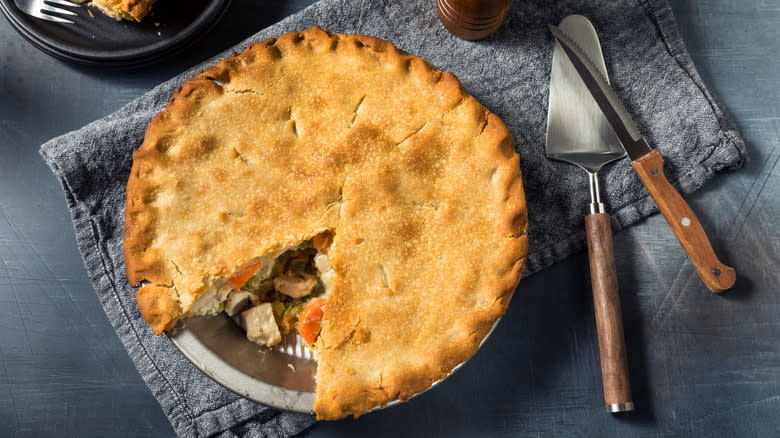
For this article, we spoke with four accomplished chefs. James Beard Award-winning Chef Michael Smith is the author of FARINA and owner of two of Kansas City's most beloved restaurants, Extra Virgin and Farina. James Beard-recognized Chef Chad White of restaurant Zona Blanca in Spokane, Washington, has more than two decades of cooking experience, and appeared on Bravo's Top Chef Season 13. Dennis Littley is a fine dining chef with over 40 years of experience in the kitchen and owner of askchefdennis.com, and has contributed to an array of national and international major outlets with his culinary expertise. Chef Giancarlo Borletti of BSTRO38, in New York City, is a professional chef with over 20 years of experience, having learned from some of the top chefs and worked at a Michelin-starred restaurant.
Read the original article on Mashed

